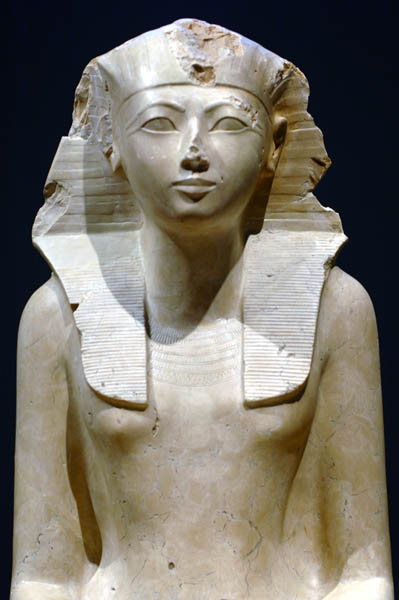
Painted limestone statue of Hatshepsut from Deir el Bahri, Thebes, 18th Dynasty (76.75 inches high).
Reading from the top down, the hieroglyphic inscriptions on the left side of the throne say "the good goddess" and "lady of the Two Lands" (Upper and Lower Egypt). On the right side Hatshepsut is described as the "daughter of Re." Small hemisphere glyphs (for "t") indicate the female gender of these royal titles. It is thought that while the main sanctuary of the temple was dedicated to the god Amun-Re, this sculpture of the queen was placed in that chamber on the south side of the temple, where Hatshepsut's personal funerary cult had its place.
A sense of royal dignity, composure, and permanence is created by the facial expression, the static pose, and the rectangular throne and high base from which the symmetrical and frontal figure emerges. Cracks in the face, neck, and torso indicate ancient damage sustained by the sculpture. In fact, only the head, forearms, and parts of the throne were excavated by the Museum archaeologists. The body had already been found in 1843-45 by a German expedition and became part of the collection of the Egyptian Museum in Berlin. The Berlin museum agreed to exchange the body of our statue for the body of a sphinx--also found by Metropolitan Museum archaeologists--that fit the head of a sphinx in their museum, and so it was possible to restore the Berlin and the New York statues to almost their original states. The left eye of the Metropolitan's seated Hatshepsut was recently restored by Museum conservators.




